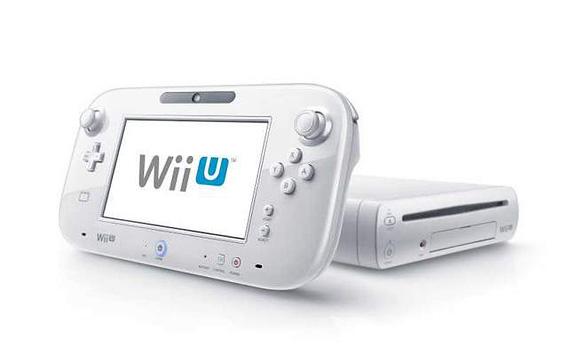
The editors at 24/7 Wall St. reviewed products and redesigns that were launched with high expectations this year but that have flopped catastrophically.
Click here to see the Worst Product Flops of 2013
24/7 Wall St. only considered flopped products that met three criteria. First, the launching company must have invested significant resources in the product’s development and marketing. Second, the failure had to occur in 2013 and require significant response from the company. Third, the product’s failure had to end up inflicting sizable damage to the company’s bottom line, its reputation, or both.
Some of the products on our list, like the Samsung Galaxy smartwatch, a combination of a communication device and a fashion statement, may have simply been ahead of their time. Others, like the see-through Lululemon yoga pants, were an embarrassment that top management unfortunately made worse. And then there were epic flops, like the HealthCare.gov Internet portal, which will probably end up as a case study in business, political science and sociology textbooks for years to come.
A fair number of the flops came from the IT sector — not very surprising when you consider how rapidly technologies are evolving and how fickle consumers can be about the latest smartphone or tablet. But there were also tone-deaf exercises in creativity, like “The Lone Ranger,” which set new standards for cinematic fiascos.
These are the worst product flops of 2013.
1. Wii U
> Company: Nintendo
The anointed successor to Nintendo’s wildly successful Wii game console, the Wii U was launched late last year with all the fanfare expected of one of the three big players in the console arena. But the home of Super Mario and Donkey Kong found itself quickly falling behind in sales.
The Associated Press reported that while nearly 4 million units of the had been sold worldwide between November 2012 and the end of September, sales of Sony’s PlayStation 4 and Microsoft’s Xbox One both surpassed 1 million units on just the first day of their respective launches. Wii U sales are also far short of the 9 million units the company said it would sell by the end of March 2014.
Following a drop in price, Wii U sales doubled to 300,000 units for the quarter ending Sept. 30. According to the company, the Wii U still has a negative impact on Nintendo’s profits, posting an $81 million quarterly loss.
Nintendo shares have lost more than three-quarters of their value since late 2007.
2. Yogawear
> Company: Lululemon Athletica
You could call this a case of bad exposure. Vancouver-based Lululemon had been riding the yoga craze for years, gaining traction with consumers for its stylish and high-end line of yoga clothing and accessories, along with other athletic apparel. But in March, complaints began to filter in about how the material used in some of the company’s costly (starting at around $100) yoga pants was so sheer it became see-through.
Lululemon quickly went into damage control mode, telling consumers the company was “100% committed to doing the right thing.” It pulled the affected product from both its stores and the company’s website and worked to replace the fabric in question. The recall cost the company an estimated $60 million — as well as a $17.5 million write-down on the affected inventory.
And that might have been the end of it, except that Lululemon founder Chip Wilson later told Bloomberg TV that, “’frankly, some women’s bodies just don’t actually work” when it comes to the brand’s yoga pants. That brief video clip soon went viral, much to Lululemon’s dismay. Wilson later apologized for his remark and ended up resigning as Lululemon’s chairman; the company also named a new CEO.
ALSO READ: The 10 Least Respected Companies in America
3. BlackBerry Q10
> Company: BlackBerry
After leading the pack for years in the smartphone market, BlackBerry has quickly watched its products become also-rans — falling behind touch-screen devices such as the iPhone and the Android-powered devices by Samsung. Launched over the summer of 2013, the keyboard-equipped Q10 — as well as its touch-screen sister, the Z10 — were considered BlackBerry’s last chance to get back in the game.
Industry analysts were, at first, encouraging. In a product preview, The New York Times technology blogger David Pogue even said that no smartphone on the market “offers a better combination of speed and accuracy for entering text” than the Q10.
But it appears the race may have been over before it even started, as consumers stayed away. In August, executives of wireless carriers and retailers told The Wall Street Journal that no one was buying the device. One owner and operator of more than a dozen Wireless Zone stores in the Midwest told the paper that he had to return most of the Q10s to the vendor after seeing “virtually no demand” for the device.
In September, BlackBerry announced it was cutting one-third of its staff, scaling back operations, and taking an inventory write-down of about $960 million for its fiscal second quarter.
4. HealthCare.gov
> Company: n/a
President Barack Obama earned a place in history for, among other achievements, his 2010 passage of the Affordable Care Act, also known as Obamacare. But mismanagement of the ACA’s website, HealthCare.gov, will also be remembered as one of the biggest PR disasters (and product flops) ever experienced by a presidential administration.
Before the launch of HealthCare.gov, Obama described the website as a place where consumers could “compare and purchase affordable health insurance plans side by side, the same way you shop for a plane ticket on Kayak, same way you shop for a TV on Amazon.” But in reality the costly Internet portal — some estimates say the government shelled out more than $500 million to set it up — was not ready for the millions of consumers planning to use it.
The site crashed repeatedly following the launch on October 1, prompting the administration to bring in specialists from Google, Oracle and other tech companies to troubleshoot the maintenance issues. Figures released in mid-November by the Department of Health and Human Services showed only about 106,000 people had enrolled in an ACA plan — with less than 27,000 enrolling through the website. The site’s problems were eventually tweaked, but as Obama acknowledged in a press briefing, “We fumbled the rollout.”
ALSO READ: Iconic Brands That Just Vanished
5. HP Chromebook 11
> Company: Hewlett-Packard/Google
The Chromebook 11 could have been one of 2013’s big hits: a sleek, lightweight and inexpensive (starting at $279) laptop built around Google’s Chrome operating system. Launched in the fall, just in time for the holiday shopping season, the Chromebook 11 was intended to be the next best-selling Chromebook on Amazon.
But being the best-selling Chromebook is not necessarily successful in the grand scheme of things. According to a recent analysis of IDC data by ZDnet, Chromebook sales are a fraction of the total PC and tablet market. Based on third quarter figures, total worldwide shipments for PCs accounted for 63% of the markets, tablets accounted for 36%, and Chromebooks accounted for 1%. In other words, the product-category itself is an abysmal failure.
In the face of lackluster interest, the HP Chromebook 11 was still launched with great fanfare, receiving some positive reviews.
Then, in November, the device mysteriously began disappearing from store shelves. According to HP, as first reported by The Verge, the products were removed because the company had received “a small number of user reports that some chargers included with the device have been damaged due to over-heating during use.” In December, the U.S. Consumer Product Safety Commission recalled approximately 145,000 chargers as a fire and burn hazard. Google and HP have announced that they will resume sales, with new replacement chargers in the new units, but the negative PR may continue to take its toll. The product is still not listed on Best Buy’s website or Amazon.
6. “The Lone Ranger”
> Company: Walt Disney
This revisionist remake of the classic Western drama, a tale that began as a 1930s radio program, will mostly likely be remembered best as one of Hollywood’s most expensive flops. With a budget of around $250 million, a release over the key July 4 holiday, and the star power of Johnny Depp, “The Lone Ranger” defied the odds: It was panned by critics and ignored by most movie-goers.
In its third-quarter earnings report, Walt Disney noted that it expected to lose up to $190 million from the film’s disappointing performance. Box Office Mojo, meanwhile, pointed out that while the film’s total domestic gross was less than $90 million, it made up for that by bringing in $171.2 million in foreign box office revenue. Producer Jerry Bruckheimer blamed the critics for his film’s financial downfall. “I think they were reviewing the budget, not reviewing the movie,” he told NBC News. “The audience doesn’t care what the budget is — they pay the same amount to see the movie if it costs a dollar or $20 million.”
ALSO READ: Ten Brands That Will Disappear in 2014
7. Galaxy Gear
> Company: Samsung
Despite a very clever ad campaign showing its smartwatch as the logical progression from those fantasy wrist communication devices we’ve seen in movies and cartoons, Samsung’s Galaxy Gear never took off with consumers or critics.
A number of tech review luminaries found the device hard to use, objecting to the required use of another Samsung device, a phone or tablet, to get the full range of features.
In November, Business Korea reported that only 50,000 watches had been sold. In response, Samsung said its smartwatch sales reached 800,000 units in the two months after the Galaxy Gear’s debut. The company later confirmed that 800,000 figure actually referred to shipments worldwide, and not to consumer sales.
Apparently, consumers are not happy with the device. A number of tech news sites quoted documents reportedly leaked from retail giant Best Buy that said nearly one-third of all Galaxy Gears purchased there had been returned.
Are You Still Paying With a Debit Card?
The average American spends $17,274 on debit cards a year, and it’s a HUGE mistake. First, debit cards don’t have the same fraud protections as credit cards. Once your money is gone, it’s gone. But more importantly you can actually get something back from this spending every time you swipe.
Issuers are handing out wild bonuses right now. With some you can earn up to 5% back on every purchase. That’s like getting a 5% discount on everything you buy!
Our top pick is kind of hard to imagine. Not only does it pay up to 5% back, it also includes a $200 cash back reward in the first six months, a 0% intro APR, and…. $0 annual fee. It’s quite literally free money for any one that uses a card regularly. Click here to learn more!
Flywheel Publishing has partnered with CardRatings to provide coverage of credit card products. Flywheel Publishing and CardRatings may receive a commission from card issuers.
Thank you for reading! Have some feedback for us?
Contact the 24/7 Wall St. editorial team.




